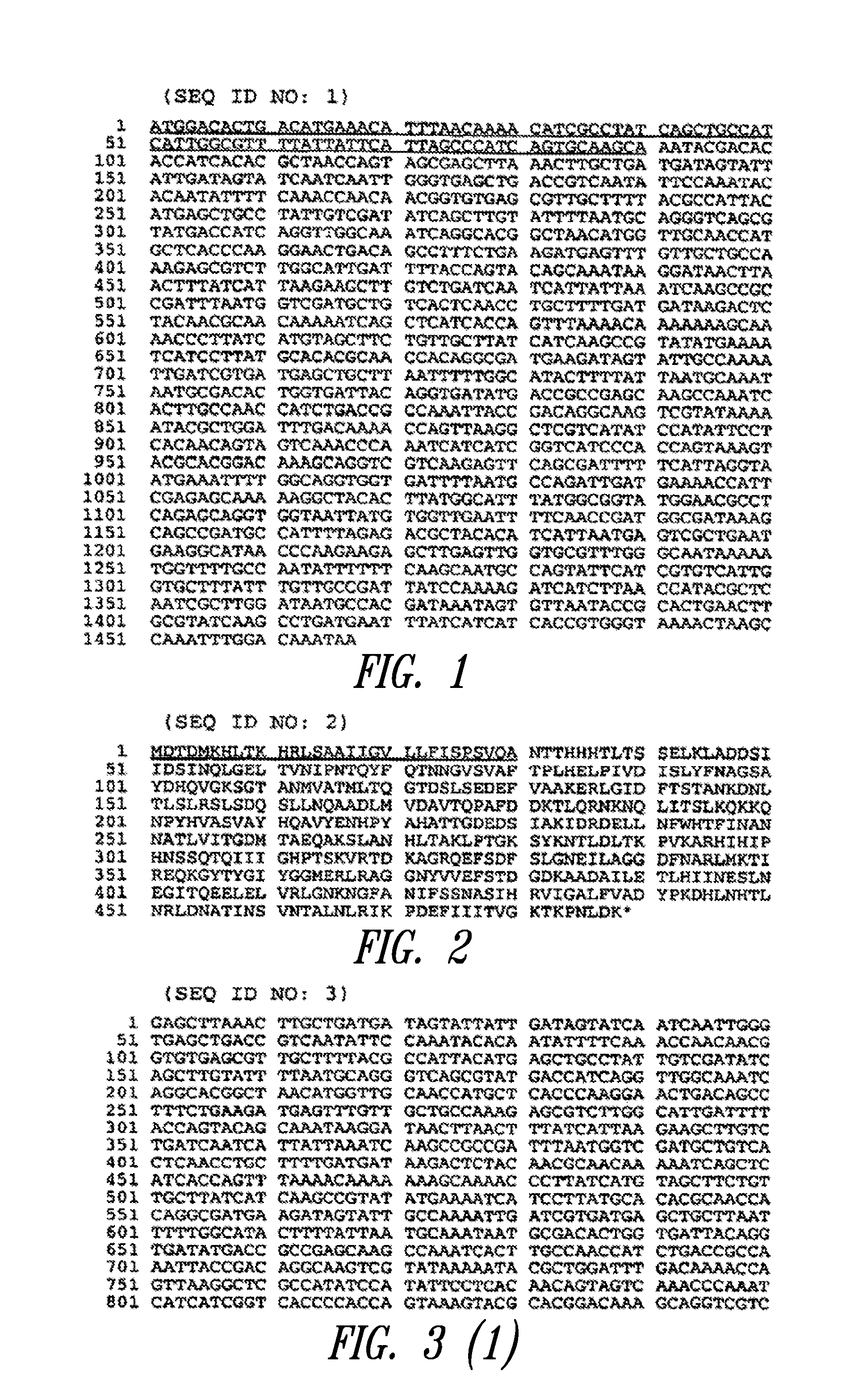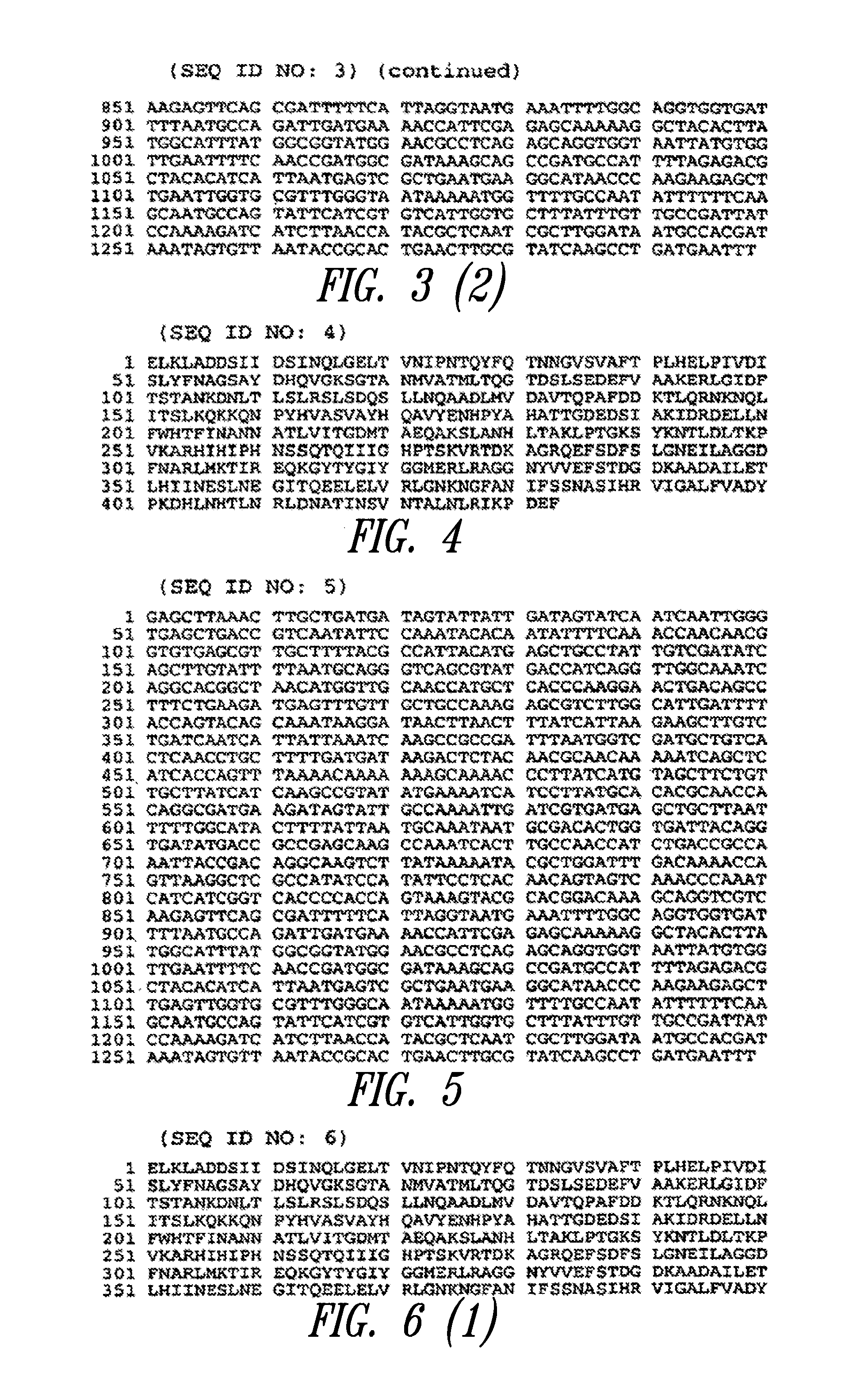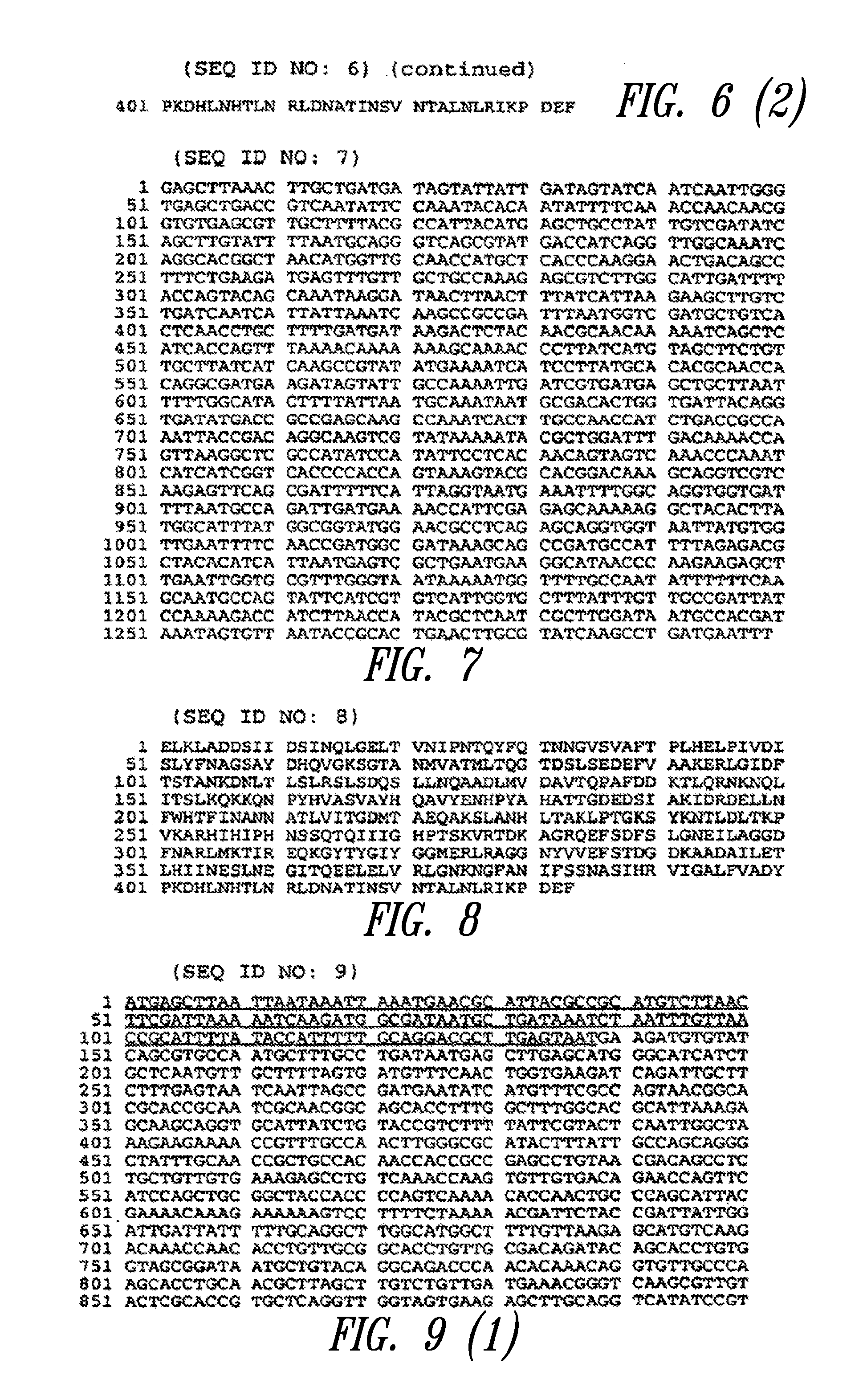Moraxella (branhamella) catarrhalis antigens
a technology of moraxella and bacterial catarrhalis, which is applied in the field of polypeptides, can solve the problems of many of these surface proteins that are still not characterized
- Summary
- Abstract
- Description
- Claims
- Application Information
AI Technical Summary
Problems solved by technology
Method used
Image
Examples
example 1
[0197]This example illustrates the cloning and molecular characteristics of BVH-MC2 gene and corresponding polypeptide.
[0198]The coding region of M. catarrhalis BVH-MC2 (SEQ ID NO: 1) gene was amplified by PCR (DNA Thermal Cycler GeneAmp® PCR system 2400 Perkin Elmer, San Jose, Calif.) from genomic DNA of M. catarrhalis strain ETSU C-2 using the following oligos that contained base extensions for the addition of restriction sites NdeI (CATATG) and XhoI (CTCGAG): DMAR544 (5′-CATCAGTGCATATGAATACGACACACCATCACACG-3′) (SEQ ID NO:15); DMAR545 (5′-GAGTTATTCTCGAGTTTGTCCAAATTTGGCTTAGTTTTAC-3′) (SEQ ID NO: 15). PCR products were purified from agarose gel using a QIA® quick gel extraction kit from QIA®gen following the manufacturer's instructions (Chatsworth, Calif.), and digested with NdeI and XhoI (AMERSHAM Pharmacia Biotech, Inc, Baie d'Urfë, Canada). The pET21b(+) vector (NOVAGEN, Madison, Wis.) was digested with NdeI and XhoI and purified from agarose gel using a QIA® quick gel extraction...
example 2
[0202]This example illustrates the cloning and molecular characteristics of BVH-MC3 gene and corresponding polypeptide.
[0203]The coding region of M. catarrhalis BVH-MC3 (SEQ ID NO: 9) gene was amplified by PCR (DNA Thermal Cycler GeneAmp® PCR system 2400 Perkin Elmer, San Jose, Calif.) from genomic DNA of M. catarrhalis strain ETSU C-2 using the following oligos that contained base extensions for the addition of restriction sites NdeI (CATATG) and XhoI (CTCGAG): DMAR592 and DMAR593, which are presented in Table 1. The methods used for cloning BVH-MC3 into an expression vector and sequencing are similar to the methods described in Example 1.
[0204]It was determined that the open reading frame (ORF) which codes for BVH-MC3 contains 1656-bp and encodes a 551 amino acid residues polypeptide with a predicted pI of 4.68 and a predicted molecular mass of 58910.13 Da. Analysis of the predicted amino acid residues sequence (SEQ ID NO: 10) using the Spscan software (Wisconsin Sequence Analysis...
example 3
[0206]This example illustrates the cloning and molecular characteristics of BVH-MC4 gene and corresponding polypeptide.
[0207]The coding region of M. catarrhalis BVH-MC4 (SEQ ID NO: 11) gene was amplified by PCR (DNA Thermal Cycler GeneAmp PCR system 2400 Perkin Elmer, San Jose, Calif.) from genomic DNA of M. catarrhalis strain ETSU C-2 using the following oligos that contained base extensions for the addition of restriction sites NdeI (CATATG) and XhoI (CTCGAG): RIOS71 and RIOS72, which are presented in Table 1. The methods used for cloning BVH-MC4 into an expression vector and sequencing are similar to the methods described in Example 1.
[0208]It was determined that the open reading frame (ORF) which codes for BVH-MC4 contains 1251-bp and encodes a 416 amino acid residues polypeptide with a predicted pI of 4.84 and a predicted molecular mass of 46125.11 Da. Analysis of the predicted amino acid residues sequence (SEQ ID NO: 12) using the Spscan software (Wisconsin Sequence Analysis P...
PUM
 Login to View More
Login to View More Abstract
Description
Claims
Application Information
 Login to View More
Login to View More - R&D
- Intellectual Property
- Life Sciences
- Materials
- Tech Scout
- Unparalleled Data Quality
- Higher Quality Content
- 60% Fewer Hallucinations
Browse by: Latest US Patents, China's latest patents, Technical Efficacy Thesaurus, Application Domain, Technology Topic, Popular Technical Reports.
© 2025 PatSnap. All rights reserved.Legal|Privacy policy|Modern Slavery Act Transparency Statement|Sitemap|About US| Contact US: help@patsnap.com



